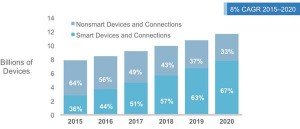“Never interrupt your enemy when he is making a mistake.” —Napoleon Bonaparte
When your competitors make mistakes, it makes winning so much easier. But what if it’s you who is making a mistake, while your competitors are off to the races? You won’t know until you figure out what your competitors are up to.
Knowing what the competitors are doing – how they are thinking about the market, what tactics they are using, how they are crafting messages and design – can make all the difference in the battle for the customers’ mind share and conversions.
In addition, competitive analysis can be a treasure trove of conversion optimization insights, yet it often gets skipped. And it’s not just a CRO problem – it is a marketing-wide phenomenon.
A Conductor study of 467 marketers found that nearly three quarters (74 percent) agreed that competitive analysis is “important or very important,” but nearly six out of 10 (57 percent) admitted they weren’t very good at it.
What Is Competitive Analysis?
Competitive analysis is a broad term for the practice of researching, analyzing, and comparing competitors in relation to yourself. Companies do it for a wide variety of reasons – SEO, branding, GTM strategy, etc. – and you can definitely use it for UX and conversion optimization, too.
If you do invest in competitive analysis (CA), you will reap the benefits of clarity and confidence. You can’t beat CA if you want to answer certain types of questions, like:
- What makes my company unique? How do we stand out?
- How do my customers think of my company compared to the competitors?
- How does user experience on my website stack up to the competition?
There’s a great deal to be gained from a thorough, regular competitive analysis – usability insights, design advantages, a more convincing value proposition, and of course, ideas for testing.
First Thing’s First: Set Your Goals
Before you start the analysis – remember the 1st essential truth of competitive intelligence: How one thinks about the mission affects deeply how one does the mission.

The fact that your client, leadership or colleagues believe something about competitors doesn’t mean it is true. We all have blinders on sometimes. So make sure you go in with an open mind.
It is just as important to have clear goals – what decisions will your competitive research impact? Are you looking to refine the messaging? Experiment with the funnel structure? Get inspiration for A/B or MTV testing?
Knowing your goals upfront will help you structure the research to meet those goals.
Getting Started: Who’s Your Competition?
Let’s do this! This is the easiest part of the equation because you should know your industry like the back of your hand. Though that shouldn’t stop you from conducting this step to see if there are new players or if anything has changed with the old ones.
To find out who your top competitors are:
- Do a Google search, check Google Trends, SimilarWeb, Compete or Alexa.
- Check the list of presenters and companies running booths at the latest industry conference.
- Ask your customers who else they considered for the same product or service.
Competitive Usability Investigation
According to research from Forrester, consumers visit three sites on average before buying or signing up. Does your website stand out in a good way?
Comparative user testing to the rescue: you ask the participants to evaluate your website as well as the websites of your top 2 competitors. To avoid biased feedback, try not to disclose which company you are with, and mix up the order in which you show the websites to the participants. Not to overwhelm the participants, limit the number of websites to 3 per person.

A recent competitive UX benchmark conducted by CXL Institute
If you are doing a moderated usability study with a sample that is close to your target customers, start by asking the participants to enter a query into Google.
Ask them to use the words they would naturally use when looking for a product or service you offer. What results show up? What do they choose to click? Why? If your company doesn’t show up in the search results or doesn’t get clicked on – you know you’ve got work to do.

Next, do a 5-second first impression test. Give a participant 5 seconds to look at the 1st website and then ask them:
- What 3 words would you use to describe the site?
- What is it about? What products or services are offered and for whom?
- How does this website make you feel?
Then do the same for the 2nd and 3rd website. You’ll walk away with unstructured data as well as summary word clouds so you can quickly see how the first impressions of your site line up with the competition.

Image Source: FiveSecondTest
Next, test the key flow/the check-out process. Give the participants a scenario where they have to use the website to solve a problem and/or go through the checkout process. After each experience, ask:
- What was the worst thing about your visit to this website?
- What aspects of the experience could be improved?
- What did you like about the website?
- What other comments do you have?
Once the participant has gone through all the websites, here comes the big question:
What experience did you like better? Why?
Common themes in the participants’ responses are a great foundation for hypotheses.
Karl Gilis, web usability consultant and international speaker, is a big fan of comparative user testing:
Karl Gilis:
“For me, it’s incredibly interesting to see what the users like and dislike about the sites of my client’s competitors. And I’m not talking about what they think of the design, but what makes them happy and what frustrates them. What elements and what tricks seem to delight them?
The users don’t have to fulfill full tasks at these websites. You can get good results by showing different versions of the same type of page and observe their reactions and behavior.”
Don’t forget to do your own heuristic homework and go through the checkout process yourself.
Things to pay attention to:
- Steps that don’t make sense (from your customer’s perspective).
- Steps that are combined or eliminated compared to your funnel (maybe you don’t need them either).
- Upsells and cross-sells (are there additional revenue opportunities you too could be leveraging?)
Jaime Levy, UX Strategist and Author, suggests also looking at content types, personalization features, and community features on competitors’ websites.
As you are doing your analysis, write down your observations, take screenshots and give them descriptive names to make it easier to browse later.
André Vieira, Senior Conversion & Marketing Analytics Manager at XING, finds CRO extremely useful for ideation purposes:

André Vieira:
“You could look at many different elements in your competitor’s pages, such as copy, number and placement of images, page structure, page length, what is the next step in the funnel, amount of CTAs, types of CTAs, etc. and compare to what you have on your website and in your idea backlog.
When possible, I also find it useful to track the tests that my competitors are running (you can use tools like Versionista or VisualPing). This gives me insight into what problems they’re trying to solve. Depending on the overlap between our audiences, I may have to solve the same problems in the future, so it’s good to learn from others.”
Karl Gilis recommends to go beyond your main competitors, and look at websites in different countries or similar pages of websites out of your business area: “If you sell something online, every shopping cart or checkout procedure can be an inspiration.”
Competitive Value Proposition Investigation
After leaving your website, most people will remember up to three reasons to buy from you or sign up for your service. Most likely they’ll only remember one – your main selling point. What is it on your website? does it reflect your competitive advantage?
To create a value proposition that really differentiates your offer, you have to know how the competitors position themselves.
To help pinpoint your unique value proposition, Chris Goward from WiderFunnel created a Venn diagram featuring POPs, PODs and POIs.

- Points of Parity (POPs) are the features you offer that are important to your prospects, that you also share with your competitors.
- Points of Difference (PODs) are the features that are important to your prospects and not available from your competitors.
- Points of Irrelevance (POIs) are features that you customers don’t really care about.
Your PODs is how you win the game.
A word of caution from Chris:

Chris Goward:
“All PODs are not created equal. Some will be more important than others and some will only be important to certain customer segments.
No matter how much effort you’ve put into researching and brainstorming your value proposition points, you should test them to validate whether they’re best!”
Tony DeYoung, SEO and CRO consultant, uses competitive analysis to craft effective value propositions for his clients:

Tony DeYoung:
“Most companies try to be everything to everyone and don’t create value propositions that define/target specific ideal customers. The lean, aggressive ones do. Reviewing a competitor’s online presence helps me understand how to differentiate my client. I’ m looking for benefits that are unique, not just “more features” or “cheaper”.
Reliable lifts come from knowing your customer and tailoring the value proposition to match that customer’s motivations in a way that no other website will. You can enhance it with a bunch of human behavior principles (liking, scarcity, reciprocity, social proof, consistency etc.). But you have to have the foundation of what makes you unique, in order to get people return to you after they browse around.”
Interview Your Competitors’ Customers
Competitors’ customers are worth their weight in gold. Not only can they tell you how satisfied they are with the competitor’s product or service, they can also clue you in as to why they picked the competitor in the first place.
To get a hold of your competitors’ customers, use your network – Who do you know? Who do they know? Also try “snowball recruiting” – ask every research participant who they can introduce you to for subsequent interviews. You could ask your current customers to recommend their peers for the study (offer compensation for both parties).
Sean Campbell recommends asking your competitors’ customers these questions:
- What caused you to start looking for a solution?
- What were your top 5 buying criteria – in order of importance?
- What were the main reasons you chose the company you did?
The good old NPS survey can also come in handy. Ask:
On a scale from 1 to 10, with 10 being “Extremely likely”, how likely are you to recommend the competitor’s product to a friend or a colleague?
Please explain why you have chosen [number].
Having this information about your competitor will give you a strong edge.
Competitive Analysis for Design
Even though design is just one part of the conversion puzzle, it is an important element of overall CRO success.
Katya Lombrozo, Growth Designer, always does competitive analysis as part of her creative process:

Katya Lombrozo:
“Before I take on a project, I ask the client for three competitors’ web sites, as well as what their strengths and weaknesses are, compared to my client’s own product/service. Then I perform my own search, going through at least 2 pages of PPC ads and organic results.
What I am looking for is common trends within that vertical. It gives me an idea of how to break out from that mold with visual design and optimization tactics.
I analyze the story the competitors tell with their landing pages, their site UX, and transparency (reviews, trust). Then I adjust my wireframe, making sure my client’s page can stand up to all that and more. Sometimes all I need is a better visual design than the competitor’s, but often, it is a matter of better explaining the value proposition of the service/product and putting together a more logical flow of elements.”
Khattaab Khan, Director of Experience Optimization at BVAccel, also uses competitive analysis to benchmark UX/UI and gauge to what the users are most responsive:
 Khattaab Khan:
Khattaab Khan:
“You are competing for mindshare with your direct competitors, especially mindshare of the users coming from organic search.
On competitors’ sites I’m looking at the navigation, number of steps in the funnel, and structure of focused landing pages.”
Quantitative Competitive Investigation
You can pull a wealth of data about your competitors from SimilarWeb, including their traffic volume and key traffic sources, their organic and paid keywords, including ‘Google not-provided’ keywords.

With SEMrush you can find out what are your competitors’ best performing keywords. You can also get insights into your competitors’ strategies in display advertising, organic and paid search, and link building.
Other keyword-related tools you can leverage are Spyfu and iSpionage – both allow you to download your competitors’ most profitable keywords.
Armed with your competitors’ most effective keywords, you are in a great position to craft irresistible copy variations.
Here’s Tony DeYoung explaining his process:
 Tony DeYoung:
Tony DeYoung:
“I always do competitive analysis for SEO and SEM. For SEO I look at my competitors’ keywords and their page rank/authority. This tells me if it is even realistic to try to rank or bid on a keyword, or whether I need to niche more. It is also a great way to find useful backlink sites to build SEO.
This isn’t directly CRO – but it has an impact. The more specific I can be on search terms that uniquely lead to what I offer on my site, the higher will be conversion rates.”
Functional Investigation
Studying your competitors’ technology stacks can shed light on their level of maturity as a digital marketing organization. You might also get some ideas for tools to try for yourself. BuiltWith lets you take a peek under the hood of your competitors’ websites and find out
exactly what software tools they are using.

See what’s going on under the hood of your competitors’ sites
Brian Massey from Conversion Sciences leverages functional analysis to help prioritize testing ideas:

Brian Massey:
“In general, we find competitive analysis to be a great source of hypotheses in CRO.
Competitive analyses are also ripe for misuse. We want to “steal” ideas from competent competitors who aren’t making the same mistakes that everyone else is, namely, designing without data.
We can get a very good idea of a company’s capability by examining the tools they have installed. We start by installing the Ghostery extension in our browser. Ghostery examines the tags that live on a website.
You could score your competitors on a scale from Rookies to MVPs. Rookies have no analytics or experimentation tools on the site. MVPs have a full suite of analytics, UX tools and AB testing solutions.
- Give a company 1 point for Analytics package. Google Analytics is typical.
- Add 1 point for tag management. Google Tag Manager is the market leader right now.
- Add 2 points for UX tools. Look for heatmap and session recording tools or survey and feedback tools.
- Add 5 points for A/B testing tools. If they are using these tools, they are using some of the most reliable data available.
If your competitor scores 7-9 points, you should test ideas you find on their site first.
If your competitor scores 3-6 points, test their ideas second.
Anything less? You should consider their ideas with great skepticism.”
Conclusion
There’s something to be said for a head-down approach to CRO: good things happen when you are laser-focused on your customers and your analytics.
Jared Spool, Co-Founder and Co-CEO of the Center Centre School for UX Designers, recommends that companies not pay a lot of attention to their competitors: “Instead, they should focus on their customers and users. Really get to know the users’ problems and what customers are struggling with. What will often happen is they’ll see opportunities that no competitor is seeing. And that will give them an advantage.”
Competitive analysis, like money, is a great servant, but a poor master. Being reactive to what the competitors are doing can be worse than doing nothing. At the same time, knowledge is power – simply knowing how you compare to your competitors in the mind of the customer can make a world of difference.
And sometimes, our creativity needs a little boost. As Karl Gilis put it, “I definitely recommend CA. You can always learn from others. There’s nothing wrong with stealing ideas and improving them.”
Even the mega-innovator Steve Jobs expressed strong agreement with the following aphorism which he ascribed to the famous painter Pablo Picasso: “Good artists copy; great artists steal.”
You may find that adding regular competitive analysis to your CRO process and adapting your strategy based on that analysis, will fuel your creative engine and positively impact conversions. CA doesn’t have to be a standalone herculean effort – you can weave it right into the research you are already doing.
Ovid once said: “A horse never runs so fast as when he has other horses to catch up and outpace.”
Let’s play to win and allow our competitors to bring out the best in us.
Business & Finance Articles on Business 2 Community(109)
Report Post








